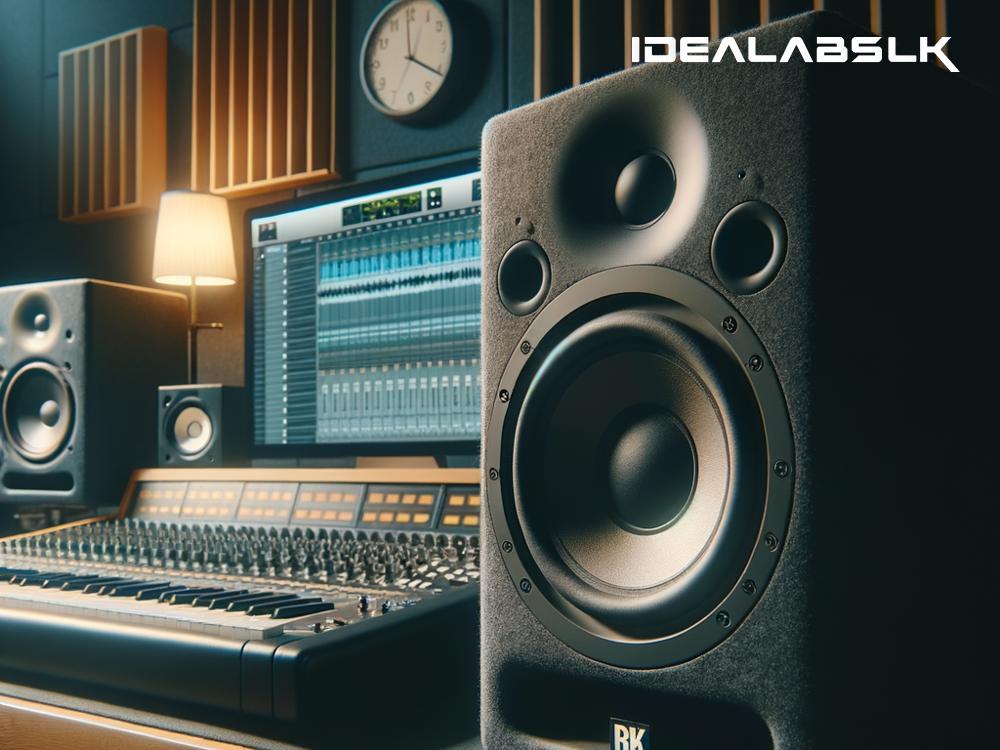Best Studio Monitors for Music Production in 2024: KRK Rokit vs. Yamaha HS8
When diving into the world of music production, one of the first things you're told you need is a good pair of studio monitors. This is no small detail—the right monitors can mean the difference between a mix that sounds great in your bedroom and one that sounds amazing everywhere. So, as we step into 2024, let's take a closer look at two of the heavy hitters in the monitor market: KRK Rokit and Yamaha HS8.
KRK Rokit: The Lowdown
KRK Rokits have long been cherished in the music production community, especially among home studio enthusiasts and beginners. They're known for their striking yellow cones but there's more to them than just looks. Generally, Rokits offer a lot of bang for your buck, with models like the KRK Rokit 5 G4, making quality monitoring accessible even on a tighter budget.
One of the main advantages of KRK Rokit monitors is their bass response. If you're producing music that's heavy on the low end—think hip-hop, electronic music, or anything with deep basslines—these monitors might be especially appealing. They're designed to give a slightly enhanced bass response, which, while not as flat as purists might want, can be really inspiring and fun during the creative process.
However, this emphasis on the bass can be a double-edged sword. Some critics argue that the Rokits can mask other issues in the mix because of their flattering low end, potentially leading to mixes that don't translate as well on other systems.
Yamaha HS8: The Lowdown
The Yamaha HS8 takes a different approach. These monitors are the successors to the legendary NS10s, studio monitors that became almost ubiquitous in professional studios from the 1980s onward. The HS8s strive to offer what their ancestors did: an honest, flat response that doesn't color the sound.
This means that what you hear is what you get. If something in your mix doesn't sound right, the HS8s will let you know. This can be incredibly valuable for critical listening and making sure your mixes translate well across different listening environments. The HS8s are particularly renowned for their midrange clarity, which can help in making crucial mixing decisions, especially for vocals and lead instruments.
The flip side of this transparency is that mixes might not always sound as exciting on HS8s during the early stages of production. If your track has issues, the HS8s won't hide them, which, while ultimately useful, can be a bit discouraging for some.
Head-to-Head: Making the Choice
Choosing between KRK Rokit and Yamaha HS8 monitors comes down to your personal needs, your production style, and, let's be honest, your budget.
-
Bass-Heavy Producers: If your music relies heavily on getting the low end just right, you might initially enjoy the KRK Rokits more. They can make bass-heavy music production instantly gratifying, though you might need to check your mixes on more neutral systems to ensure they translate well.
-
The Critical Listener: If your priority is accuracy and you want no sugar-coating on your mixes, the Yamaha HS8s are your go-to. They're designed for critical listening, helping you to make mixes that sound good not just in your studio but on any system.
-
Budget Considerations: Typically, KRK Rokits are a bit more wallet-friendly, especially the smaller models. This can be a big factor if you're setting up your first home studio. Yamaha HS8s might be a bit of a step up price-wise, but many argue that they're worth the investment for their precision.
-
Room Size: Consider the size of your room. The Yamaha HS8s, with their 8-inch cones, can fill a larger room more effectively, but in a small bedroom studio, they might be overkill, potentially leading to bass buildup. Smaller Rokits or even the Yamaha HS5s might be more appropriate for tiny spaces.
Closing Thoughts
In the end, both KRK Rokit and Yamaha HS8 monitors have their place in music production. Your choice should be guided by what you value more: the Rokit's bass-heavy enthusiasm or the HS8's unflinching honesty. Many producers eventually find space for both in their studios, using them to cross-reference mixes and get the best of both worlds.
As we move through 2024 and beyond, remember that the most important tool in music production is your ear. Whichever monitors you choose, developing your listening skills and learning how your studio monitors translate to the outside world will be key to creating amazing music that resonates with listeners everywhere.

